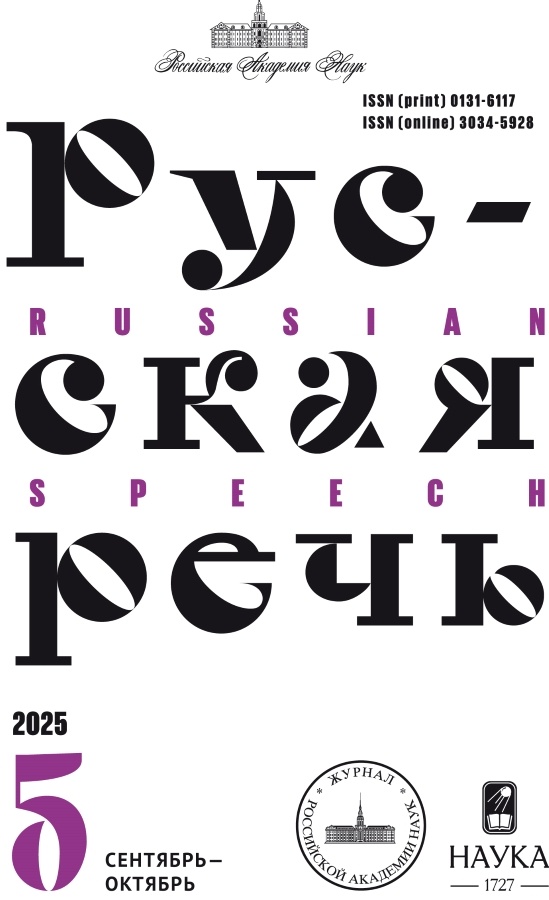The Linguistic Landscape in the Russian Colony of San Javier (Uruguay)
- Авторлар: Pilipenko G.P.1, Yasinskaya M.V.1, Bereznev V.I.1
-
Мекемелер:
- Institute of Slavic Studies of the Russian Academy of Sciences
- Шығарылым: № 5 (2025)
- Беттер: 43-54
- Бөлім: Issues of Modern Russian Language
- URL: https://rjonco.com/0131-6117/article/view/692802
- DOI: https://doi.org/10.31857/S0131611725050049
- ID: 692802
Аннотация
The paper discusses the linguistic landscape of the city of San Javier, Uruguay for the first time. San Javier is a Russian colony founded by immigrants from the South Russian dialect zone, and the inscriptions found in public spaces of the city are analyzed. These inscriptions are collected during fieldwork researches carried out from 2015 to 2023. In San Javier, there are inscriptions written in Russian in both Cyrillic script and Spanish Latin script. The analysis reveals that these inscriptions reflect both phonetic and grammatical features of the South Russian dialect (e. g. akanye, the [γ] > [h] change at the end of the word, the pronunciation of the bilabial consonant). The contact phenomena, e. g. the exchange of letters between Cyrillic and Latin scripts, and betacism (when sounds [b] and [v] are confused), are also present in the inscriptions. This dialect has been evolving for over a century in close contact with Spanish, which explains the presence of these contact phenomena. The inscriptions sometimes use transliteration of Russian words. Among the anthroponymic names found in private sector, there are numerous diminutive names. Recently, bilingual signs have begun to appear on official signs and administrative buildings. This is due to several reasons, such as preserving the linguistic identity of city residents who no longer speak Russian and promoting San Javier as a tourist destination.
Негізгі сөздер
Авторлар туралы
G. Pilipenko
Institute of Slavic Studies of the Russian Academy of Sciences
Email: glebpilipenko@mail.ru
Moscow
M. Yasinskaya
Institute of Slavic Studies of the Russian Academy of Sciences
Email: jasinskaja.inslav@gmail.com
Moscow
V. Bereznev
Institute of Slavic Studies of the Russian Academy of Sciences
Email: bereznev09@yandex.ru
Moscow
Әдебиет тізімі
- Березнев В. И., Ясинская М. В. Рассказы о еде у русских эмигрантов в Аргентине и Уругвае (по материалам экспедиции 2023 г.) // Живая старина. 2024. № 2. С. 53–57.
- Бугаева В. Владимир Рослик // Русские в Уругвае: история и современность / Под ред. С. Н. Кошкина. Монтевидео: Mastergraf SRL, 2009. С. 185–192.
- Касаткин Л. Л. (ред.). Русская диалектология. М.: Академия. 2005. 288 с.
- Петров С. В. Южноамериканский Израиль: предварительные результаты полевых исследований в русской колонии Сан-Хавьер // Религиоведческие исследования. 2010. № 3–4. С. 66–80.
- Петров С. В. Новый Израиль и Красный Октябрь: движение русского религиозного разномыслия на переломе эпох // Государство, религия и церковь в России и за рубежом. 2019. № 1–2. С. 371–395.
- Пилипенко Г. П. Русские в Уругвае: полевые заметки // Славянский альманах. 2018. № 3–4. С. 306–317.
- Рослик Л. Сан-Хавьер // Русские в Уругвае: история и современность / Под ред. С. Н. Кошкина. Монтевидео: Mastergraf SRL, 2009. С. 53–66.
- Семикина A. Культурный центр Максима Горького города Сан-Хавьер // Русские в Уругвае: история и современность / Под ред. С. Н. Кошкина. Монтевидео: Mastergraf SRL, 2009. С. 143–151.
- Landry R., Bourhis R. Y. Linguistic Landscape and Ethnolinguistic vitality: An Empirical Study // Journal of Language and Social Psychology. Vol. 16. 1997. P. 23–49.
- Martínez V. Los rusos de San Javier. Perseguidos por el zar. Perseguidos por la dictadura uruguaya. De Vasili Lubkov a Vladimir Roslik. Montevideo: Ediciones de la banda oriental S. R. L., 2013. 298 p.
- Pilipenko G. Language as a Home Tradition: Linguistic Practices of the Russian Community in San Javier, Uruguay // Homemaking in the Russian-speaking Diaspora / Ed. by Maria Yelenevskaya and Ekaterina Protassova. Edinburg: Edinburgh University Press, 2023. P. 140–163.
- Sikimić B., Nomaći M. Jezički pejzaž memorijalnog prosotra višejezičkih zajednica: Banatski Bugari / Palćani u Srbiji // Južnoslovenski filolog. LXXII. 2016. S. 7–31.









